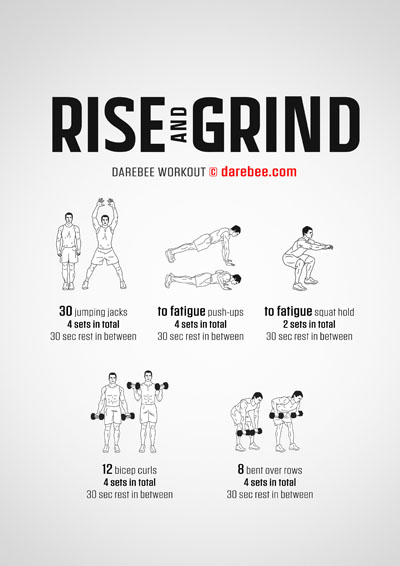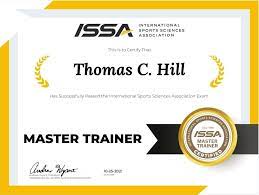
A NASM-certified personal trainer's salary is significantly higher than that of an equivalent job in the same field. This is based on a review of job postings and other data sources. The average salary for a NASM certified personal trainer is $47,467 per year.
NSCA CSCS
The average salary for a personal training professional in the United States can be $52,416 per a year. This salary is slightly less than the $41,927 nationally average. Your salary can be affected by many factors, including where you live and how long you have been working.
The CSCS credential is a requirement for many jobs within the fitness industry. It also qualifies you for the leadership role in conditioning and strength for professional sports teams. Additionally, a CSCS certified will allow you to set your price and start your own business. You should be aware that there are downsides to working for yourself, such as a lower income or less job security.

Salary for an ACE personal coach
You will be paid more as an ACE-certified personal trainer than the average one. The certification indicates that you have successfully completed a rigorous training program and passed an extensive exam. ACE trainers enjoy high respect and can help clients reach their fitness goals. They are also well-versed in nutrition, physiology, and kinesiology to help you create a customized workout plan.
An ACE certified personal training professional can expect a competitive salary, 52 week work year, and the possibility to earn a living. As well as training clients, you will also need to manage scheduling, taxes, insurance, and tax. Your motivation, drive, and communication skills are key to your income.
AFAA personal trainer salary
You must pass the Aerobics and Fitness Association of America examination to become certified personal trainer. This examination consists of a written test and a practical demonstration. It requires 70% passing marks. The exam is difficult but the Association provides resources to help you prepare for it.
It is crucial to choose a certification recognized by the National Commission for Certifying Agencies. There are many, including NASM and ACE, but AFAA is considered one of the more popular. If you're unsure of which certification to pursue, you can always take a look at the list of other certification organizations. These organizations offer many continuing education opportunities.

NASM certified personal trainer salary
The average NASM certified personal trainee salary in America is about $52,000/year, or $25/hour. This is more than $26,000 above the national average. The highest earners earn about $76,000 annually. Many personal trainers make far less. There are many opportunities for advancement. Pay may rise depending on where you live and your skill level.
As a personal trainer, your salary will depend on your location and the company you work for. Although you can find lots of information online about salary data, there are many differences between employers and cities. Some cities pay more than others and others have a higher cost of living. If you are looking to earn more, you should consider getting a certification from a recognized body.
FAQ
What happens to me if I don’t sleep enough?
Insufficient sleep can cause your brain to not receive the signals necessary for hormone regulation and other chemicals involved in controlling appetite and metabolism. In turn, this can cause you to eat more and gain weight. Sleep deprivation can also lead to excessive weight gain.
Can I exercise after eating?
It depends on the exercise you do. Avoid strenuous activities after meals because they can cause stomach cramps. Light aerobic activities such brisk biking and walking are better.
Why is physical exercise important?
Our health is dependent on our physical fitness. Regular exercise is essential for maintaining our health, weight, strength, flexibility, cardiovascular system, and overall well-being. Exercise improves sleep quality, helps with stress management, increases energy and boosts self-esteem.
Statistics
- Adolescent girls were less active than adolescent boys, with 85% vs. 78% not meeting WHO recommendations of at least 60 minutes of moderate to vigorous intensity physical activity per day. (who.int)
- Physical activity confers the following maternal and fetal health benefits: a decreased risk of pre-eclampsia, gestational hypertension, gestational diabetes (for example, 30% reduction in risk) (who.int)
- One study showed that adults who watch more than 4 hours of television daily had an 80% higher risk of death from cardiovascular disease. (heart.org)
- Globally, 28% of adults aged 18 and over were not active enough in 2016 (men 23% and women 32%). (who.int)
External Links
How To
How to Lose Belly Fats More Fast
Belly Fat is usually seen as a problem when we want to lose weight. If you look at it, belly fat is actually a positive thing. It is the fat in your stomach that protects your organs. Let's now see how to quickly lose belly fat.
Stress and inactivity are two of the major factors that cause us to store body fat. Stress makes us feel hungry constantly because it stimulates the production of the cortisol hormone. Cortisol raises insulin levels. The insulin stores the excess calories as fat. The release of adrenaline from our bodies causes increased appetite. These extra calories can also be reduced by exercise
There are many ways to reduce belly fat. Depending on your budget, you can try each one. Here are some quick tips to get rid of belly weight.
-
Reduce your food intake. Instead of eating three large meals per day, try to eat smaller meals. You will eat less calories in general.
-
Drink plenty of fluids. Water flushes out toxins, and keeps your body hydrated. Drinking water before meals will help you feel fuller for longer, so you don't overeat.
-
Avoid unhealthy snacks. If you're looking for quick fixes, snack foods like chips, cookies, candies, etc. Although tempting, they can be very unhealthy. These sugary treats have lots of empty calories so avoid them. Instead, opt for healthy alternatives such as fruits, vegetables and whole grains.
-
Strength training should be performed at least 3 times per week. Strength training builds muscle mass and burns more calories when you're not working out. It strengthens bones muscles ligaments, tendons and the heart.
-
Regularly walk or stretch. Stretching helps to improve flexibility and mobility, which reduces back pain. Walking is great for burning calories.
-
Reduce alcohol intake. Alcohol adds empty calories to your diet and has no nutritional value whatsoever.
-
Reduce your weight gradually. Your current weight is the first step to losing weight. Add 5%-10% of your total bodyweight to calculate your ideal size. Once you have reached your target weight, begin decreasing your daily calories intake by 500-1 000 calories until you reach your goal.
-
Avoid processed foods. These foods are high in salt, sugar, preservatives, and other harmful ingredients. These processed foods are often convenient, but they lack enough nutrients for good health.
-
Don't skip breakfast! A good breakfast can improve concentration, memory, as well as energy level. You should have protein (such as eggs) and fiber (such as oats) for breakfast.
-
Have regular bowel movements. Bloating and gas can be caused by irregular bowel movements and constipation. Drink plenty of water to prevent gas and fiber ingestion.